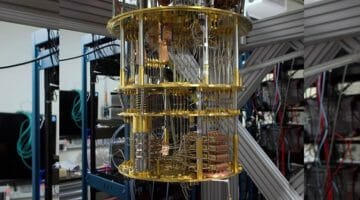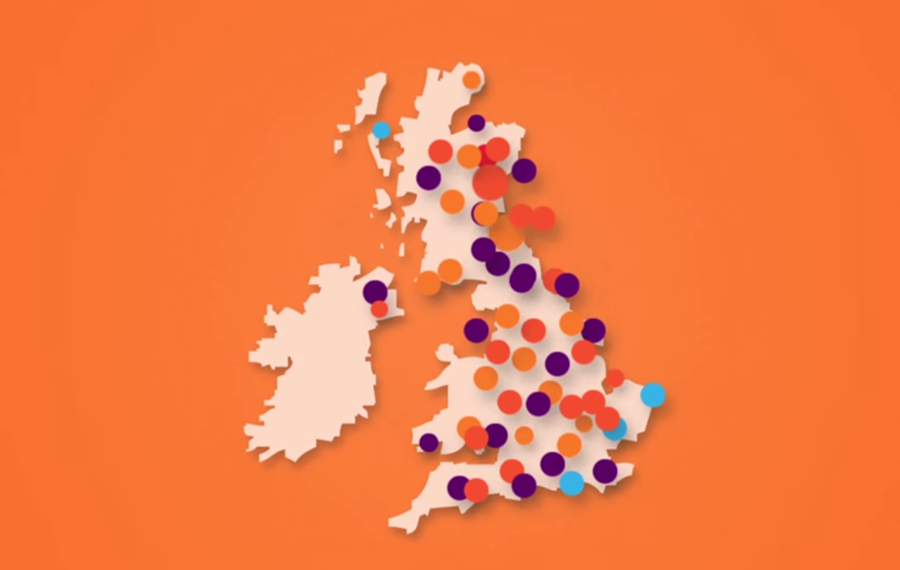The Five Most Important Data Driven Technologies Shaping the 4IR
Five major data driven techs that shape the Industry 4.0 are AI, Blockchain, IoT, Robotics, and Fintech. What is the contribution that each of these bring to the 4IR ?
- AI: The Powerful Search Engine at the Core of the 4IR
Artificial Intelligence can be defined as the capability of a machine to imitate intelligent human behaviour. We do not need to think of complicated robots to understand or picture AI. All things that augment “artificially” human intelligence are part of AI. How our phones work now is a perfect example of how AI advances and empowers all areas of society. Smartphones have been expanding their capabilities through a whole set of operations of algorithms that are being improved through feedback loops, using and analysing the data gathered by their users.
AI’s evolution is also being shaped by better algorithms and innovations in terms of computer hardware research, which has evolved quite significantly in recent years. One important innovation in the field are neurotrophic chips. These are inspired by the way biological brains work but are more energy efficient and can store more data. They are designed to access and interpret sensory data such as images and sound. Moreover, they can respond to changes in that data, in an organic adaptable way, which is not specifically programmed.
On the other hand, quantum computing is a promising technology that can escalate AI’s evolution even further. Quantum computers perform a type of computing that is different from binary digital electronic computers, which are based on transistors. Common digital computing uses data encoded into binary digits (bits), each of which is always in one of two definite states (0 or 1). Quantum computation, on the other hand, uses quantum bits, which can be in superpositions of states. This enables them to be way faster and capable to deal with extreme volumes of complex data, thus eventually becoming able to perform massive simulations; like the ones undertaken by physicists at CERN’s Hadron collider.
Quantum computing is expected to evolve even more in the near future; something that is badly needed, because the quantity of data we produce is escalating at exponential rate. This means that we will also need even more powerful computers to work out what to do with those gigantic quantities of data.
Quantum computing and Neuromorphic ships are expected to impact to ever greater heights the 2 most promising areas of AI fostering the 4IR: machine learning and deep learning.

II. Blockchain: The Potential Architect Infrastructure of the Internet of the Future
Greater sizes of data imply better calculations delivering more accurate information but it is also important to build a storage infrastructure capable of holding that data safely. Safer data storage systems, such as blockchain, can become the much needed solution to solve this problem.
According to Mark Mueller-Eberstein (2016) Blockchain can be described as “a “write only” digital platform that records and verifies transactions”.Simply put, blockchain is the next step within databases development. It can also be called Distributed Ledger Technology (DLT). As a distributed ledger, it is designed and built with the goal of securely storing millions of data within its platform, leveraging a series of architecture tweaks for it.
A blockchain platform is formed out of infinite blocks and it can be seen, as nothing else then a database made up of rows, columns, and tables. What differentiates it from other databases, is its sophisticated encryption, that makes it safer, transparent, and more trustworthy. Blockchain technology uses cryptography and digital signatures to prove identity, authenticity, and enforce read/write access rights. All transactions within a block which is part of the blockchain are visible; so there is full transparency for every transaction. Once a piece of data goes into a blockchain ledger, it cannot be (easily) altered or erased. Theoretically, there is no “central power” overseeing the ledger of transactions. Instead, blockchain technology enables a decentralized and distributed ledger where transactions are shared among a network of computers—in almost real time—rather than being stored on a central server with a central authority (like a bank) overseeing transactions.
The system was inspired by the way bitcoin was first designed when invented in 2008. Similarly to bitcoin, every time a block is made, it will attach itself to the blockchain carrying along a “hash”, or fingerprint from the previous block. These have an important function as they use cryptography to authentication the source of the transaction.
Because of these “fingerprints or hashes” there is never a duplicate recording of the same transaction. As such, the need for a central intermediary is not there anymore. This breaks with the paradigm of centralised consensus (when one central database is used to rule transaction validity) which is a huge disruption from the previous system.
Something that needs to be set out clearly is what we mean with the idea of a distributed network. The distributed network is made up by the nodes which are part of the blockchain network. These are formed by the members of the network who actively make blocks, so these are usually relatively small networks. Blockchain platforms use two types of consensus among all these members to validate the changes made on any given block amid asking users to prove ownership.
- Proof of stake (PoS) is a method by which a blockchain network aims to achieve distributed consensus.
- Proof of work (PoW) method on the other hand, asks users to repeatedly run hashing algorithms or other client puzzles to validate electronic transactions.
Both ways aim to make sure that any changes made on the blockchain are validated among all members of the network, hence making the blockchain intruders-free as any external change will be watched by hundreds, if not thousands of users.
Another interesting possibility brought along with the invention of blockchain are smart contracts.
Smart contracts are contractual terms which are recorded in a computer language instead of legal language and that can be automatically executed by a computing system, such as a suitable distributed ledger system. Smart contracts have embedded in their code, not only the rules and penalties around an agreement, similarly to a traditional contract, but also automatic enforcement of those obligations for all parts.
The potential benefits of smart contracts include low contracting, enforcement, and compliance costs, thus these can be very useful as a way to design contracts over numerous low-value transactions thus the perfect outlet for the widespread adoption of IoT. But smart contracts are not free of risks, particularly ethical ones, as they can replicate automatically all kinds of biases based on ethnicity, religion, gender et cetera.
As we have discussed, blockchain technology is able to store and distribute extreme quantities of data in a network of nodes, in a format which is theoretically transparent, secure, and immutable. One can say that the blockchain is a gigantic, distributed super-database. With this kind of data-storage capacity, the blockchain can be seen as positioning itself to become the next architectural structure of the Internet of the future.
Part 4 will be published tomorrow
Digital Transformation and the 4IR – AI, Blockchain, IoT, Fintech part 1
Digital Transformation and the 4IR – AI, Blockchain, IoT, Fintech part 2
Digital Transformation and the 4IR – AI, Blockchain, IoT, Fintech part 4

Dinis Guarda is an author, academic, influencer, serial entrepreneur, and leader in 4IR, AI, Fintech, digital transformation, and Blockchain. Dinis has created various companies such as Ztudium tech platform; founder of global digital platform directory openbusinesscouncil.org; digital transformation platform to empower, guide and index cities citiesabc.com and fashion technology platform fashionabc.org. He is also the publisher of intelligenthq.com, hedgethink.com and tradersdna.com. He has been working with the likes of UN / UNITAR, UNESCO, European Space Agency, Davos WEF, Philips, Saxo Bank, Mastercard, Barclays, and governments all over the world.
With over two decades of experience in international business, C-level positions, and digital transformation, Dinis has worked with new tech, cryptocurrencies, driven ICOs, regulation, compliance, and legal international processes, and has created a bank, and been involved in the inception of some of the top 100 digital currencies.
He creates and helps build ventures focused on global growth, 360 digital strategies, sustainable innovation, Blockchain, Fintech, AI and new emerging business models such as ICOs / tokenomics.
Dinis is the founder/CEO of ztudium that manages blocksdna / lifesdna. These products and platforms offer multiple AI P2P, fintech, blockchain, search engine and PaaS solutions in consumer wellness healthcare and life style with a global team of experts and universities.
He is the founder of coinsdna a new swiss regulated, Swiss based, institutional grade token and cryptocurrencies blockchain exchange. He is founder of DragonBloc a blockchain, AI, Fintech fund and co-founder of Freedomee project.
Dinis is the author of various books. He has published different books such “4IR AI Blockchain Fintech IoT Reinventing a Nation”, “How Businesses and Governments can Prosper with Fintech, Blockchain and AI?”, also the bigger case study and book (400 pages) “Blockchain, AI and Crypto Economics – The Next Tsunami?” last the “Tokenomics and ICOs – How to be good at the new digital world of finance / Crypto” was launched in 2018.
Some of the companies Dinis created or has been involved have reached over 1 USD billions in valuation. Dinis has advised and was responsible for some top financial organisations, 100 cryptocurrencies worldwide and Fortune 500 companies.
Dinis is involved as a strategist, board member and advisor with the payments, lifestyle, blockchain reward community app Glance technologies, for whom he built the blockchain messaging / payment / loyalty software Blockimpact, the seminal Hyperloop Transportations project, Kora, and blockchain cybersecurity Privus.
He is listed in various global fintech, blockchain, AI, social media industry top lists as an influencer in position top 10/20 within 100 rankings: such as Top People In Blockchain | Cointelegraph https://top.cointelegraph.com/ and https://cryptoweekly.co/100/ .
Between 2014 and 2015 he was involved in creating a fabbanking.com a digital bank between Asia and Africa as Chief Commercial Officer and Marketing Officer responsible for all legal, tech and business development. Between 2009 and 2010 he was the founder of one of the world first fintech, social trading platforms tradingfloor.com for Saxo Bank.
He is a shareholder of the fintech social money transfer app Moneymailme and math edutech gamification children’s app Gozoa.
He has been a lecturer at Copenhagen Business School, Groupe INSEEC/Monaco University and other leading world universities.





























